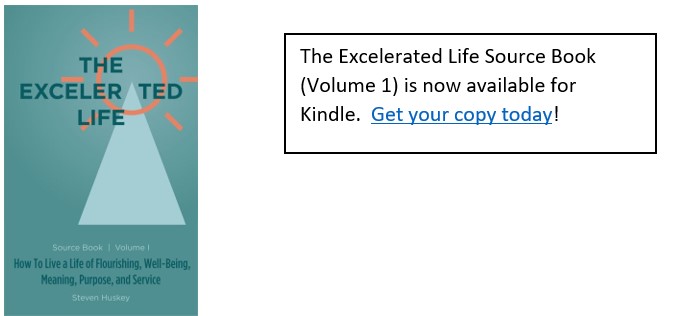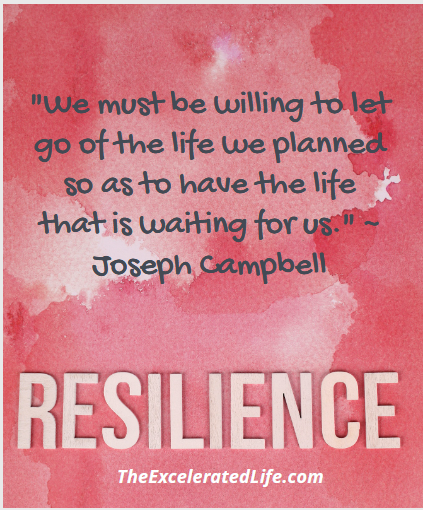Happiness and resilience go hand-in-hand. By building your happiness, that is, your positivity and well-being, you can experience all the benefits of increased positivity, including the ability to bounce back quickly when things go wrong.
Title Photo by Anastasiya Lobanovskaya
Don’t Stop Dancing
Waukesha, Wisconsin, a suburb of Milwaukee, holds a traditional Christmas parade every year. The parade on November 21, 2021, was the 58th year. One of the highlights of the parade is the “Dancing Grannies”, a group of real-life grandmothers who dress in costume and dance their way along the parade route. Although individual members have changed over the years, the Dancing Granny group has been performing since 1984.
However, events on that fateful parade day threatened to put an end to the group. Because that was the day that a man drove an SUV into the midst of the parade, striking 68 different people and killing six. Three of those six were Dancing Grannies and a fourth was the husband of one of the members. Another Granny was left with skull fractures and bleeding on the brain.
While there was some trepidation, the Grannies knew they would dance again. Betty Streng, who suffered the skull fractures and spent two weeks in the hospital, told CNN: “Why not? It’s something I worked for. I learned these dances to become an official Granny, and I enjoy doing it, so why wouldn’t I go back to doing something I enjoy? We celebrate life and celebrate the lives of those we lost, celebrate our own life, that we get to continue on and do what we love and what brings us joy.”
And in a remarkable show of resilience, the parade and the Dancing Grannies returned to Waukesha on December 2, 2022.

Happiness Is The Way
“There is no way to happiness, happiness is the way.” ~ Thich Nhat Hanh
What did I mean when I said the Grannies showed resilience? There is a link between resilience and happiness so let’s look at some definitions.
First, what is resilience? Resilience is the capacity to withstand adversity and recover quickly from difficulties.
Resilience, as defined by the American Psychological Association, “is the process and outcome of successfully adapting to difficult or challenging life experiences, especially through mental, emotional, and behavioral flexibility and adjustment to external and internal demands.” Some synonyms for resilience include strength, toughness, hardiness, and adaptability.
Importantly, resiliency is not a static characteristic, not something you either have or you don’t. It varies for all of us. We can each be naturally resilient in some situations or times in our lives and not others.
OK, then, what do I mean when I refer to “happiness”? Is it just a feel-good, smiley face, “look on the bright side” feeling?
That isn’t what I mean when I use the word. I also use “positivity” or “positive emotion” to evoke the same meaning. A good definition for “happiness” is the term psychologists use: “subjective well-being”. “Subjective” indicates that the feeling of well-being is open to the interpretation of the person having the feeling. Well-being is a combination of pleasant emotions plus a sense of meaning and purpose.
“Happiness implies a positive mood in the present and a positive outlook for the future.” [Achor] Barbara Fredrickson has identified 10 distinct positive emotions: Joy, gratitude, serenity, interest, hope, pride, amusement, inspiration, awe, and love. [Fredrickson]
So for our purposes, the terms well-being and happiness are used interchangeably.
Happiness and Resilience
Becoming a happier, more positive person changes how our minds work. It widens our perspective so we see more possibilities. We become more flexible in our thinking. We have more energy and more friends. Happier, more positive people are more productive, better leaders, and tend to make more money. They have stronger immune systems and are physically healthier. Building positivity helps us be resilient and allows us to bounce back more quickly from disappointments and difficulties. Happiness and resilience go hand in hand.
When we are flourishing, says Barbara Fredrickson, a major figure in the research of Positive Psychology, we “feel more alive, creative, and resilient.” And we have “a palpable sense of personal growth and of making a positive difference. This is flourishing.” [Fredrickson]
Positivity Builds Resilience
One appealing aspect of increased positivity, as we have seen, is that it builds resilience, the ability to recover from a setback. Positive, resilient people bounce back quickly from adversity. They view setbacks and disappointments as temporary and, instead of seeing themselves as “bad” or flawed in some way, they resolve to improve their skills and to get better at what they do.
Positivity fuels resiliency. Of course, increasing positive experiences doesn’t mean that all negativity goes away . . . only some of it. There will still be “bad things happening to good people.” But when we have been building our resources through positive experiences and emotions, we become more resilient. We are less likely to start on a downward spiral of negativity building on negativity. We don’t fall as far and we are able to bounce back more quickly.
Rumination and Resiliency
One of the obstacles that can make it hard for us to bounce back from a setback is a tendency to ruminate, which comes from the Latin word meaning “to chew over” (think of cows ruminating or chewing their cud).
Overthinking or rumination, is “thinking too much, needlessly, passively, endlessly, and excessively pondering the meanings, causes, and consequences” of your life and your problems. [Lyubomirsky] Sometimes we fall into a trap of thinking that when things get us down we need to get to the cause by focusing on the problems of our life. Research shows that this is counterproductive. Hyperfocusing on the problem often makes the picture even gloomier and increases our negativity. It doesn’t resolve the problem, and in fact, can make finding a resolution more difficult.
When you rehash a negative situation, going over and over the same negative thoughts and feelings, you get stuck in a rut, like being in a hamster wheel. And you may find it difficult to break out of the thought patterns you’ve created. One negative thought leads to another and negative thoughts lead to negative emotions. You get on a negative spiral and you aren’t able to see the situation realistically.

Thoughts Drive Emotions
When a situation, an event, or a person sets off an emotional reaction within us, we think the emotion is a result of the situation or the event or the person. But what really sets us off is the thought we had in response to the stimulus. While some emotions can be triggered automatically by our limbic system, “it takes less than 90 seconds for one of these programs to be triggered, surge through our body, and then be completely flushed out of our bloodstream.” [Taylor]
Let’s say something makes you angry. A chemical reaction occurs and the chemical is released into your bloodstream. You have a physical reaction to the chemical. But within 90 seconds that chemical has been completely flushed from your bloodstream and the automatic response is over. If you continue to feel angry after that, it is a choice you are making. You choose to continue to feel that response. [Taylor]
When something triggers an unpleasant or unwanted reaction, remember that after about 90 seconds, you have a choice to choose your response. You can choose a more resilient way of thinking by stepping back, taking a deep breath, and asking yourself, “Is there another more accurate and less upsetting way of responding to this situation?”
Building Resiliency
Anything you do that improves your positivity can help make you more resilient. A resource that can help you improve positivity and, thereby, your resiliency is The Happiness Hundred. The Happiness Hundred contains 100 exercises you can do right now to increase your feelings of happiness. You can download your free copy here.
Another way to boost resilience is to work at controlling your tendency to ruminate on negative events or situations. Try these exercises if you need help.
Dodge overthinking triggers.
- Make a list of the people, places, times, or circumstances that trigger your overthinking. Develop strategies to avoid these triggers or to modify them enough to impede their ability to trigger overthinking.
- Build your sense of self-worth. Learn a new skill, take up a new hobby, or begin a new project.
- Meditate.
Find healthy distractions.
- Look for something that completely absorbs your attention.
- Physical activity is good but not essential.
- It’s nice if it’s something you enjoy, of course, but neutral distractions also work.
“Dance Like No One’s Watching”
The Dancing Grannies tapped into their resilience and the resiliency of their community to come back strong a year after their devastating loss. But you don’t have to be a dancer or a grandma to benefit from the link between happiness and resilience.
By building your happiness, that is, your positivity and well-being, you can experience all the benefits of increased positivity, including the ability to bounce back quickly when things go wrong. Remember that, for most reactions, after about 90 seconds how we respond is our choice. Improve your response to events you perceive as negative and avoid ruminating and getting into negative thought patterns. Use exercises from The Happiness Hundred to strengthen your positive affect and improve your ability to come back stronger and bounce back higher. For that is one step in embracing your Excelerated Life™!
Are you mostly able to bounce back from negative situations, events, and people?
What small step will you take to improve your resiliency?
Share your comments by leaving a post below.
Excelerated Positivity™ — building the skills that help you flourish — is one step in creating your Excelerated Life™, a life of flourishing and well-being, and a life of meaning, purpose, and service.
Read more about the Excelerated Life™.
Resources:
Achor, Shawn. The Happiness Advantage. New York: Crown Publishing Group, 2010.
Fredrickson, Ph.D., Barbara, L. Positivity. New York: Crown Publishing Group, 2009.
Lyubomirsky, Sonja. The How Of Happiness. New York: Penguin Books, 2007.
Taylor, PhD., Jill Bolte. My Stroke of Insight. New York: Penguin Books, an imprint of Penguin Random House LLC, 2006, 2016.


